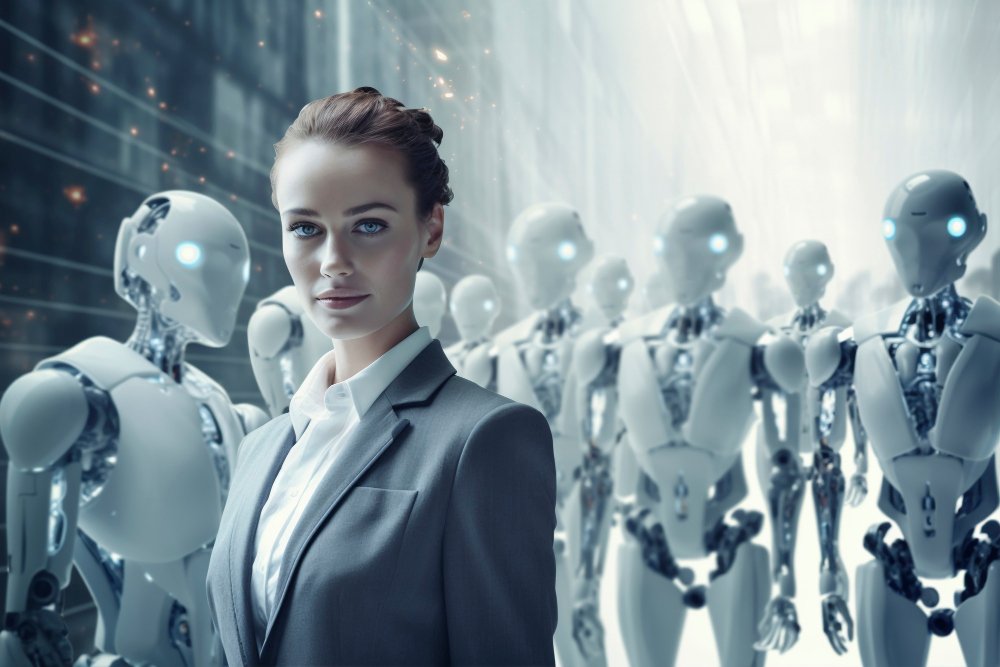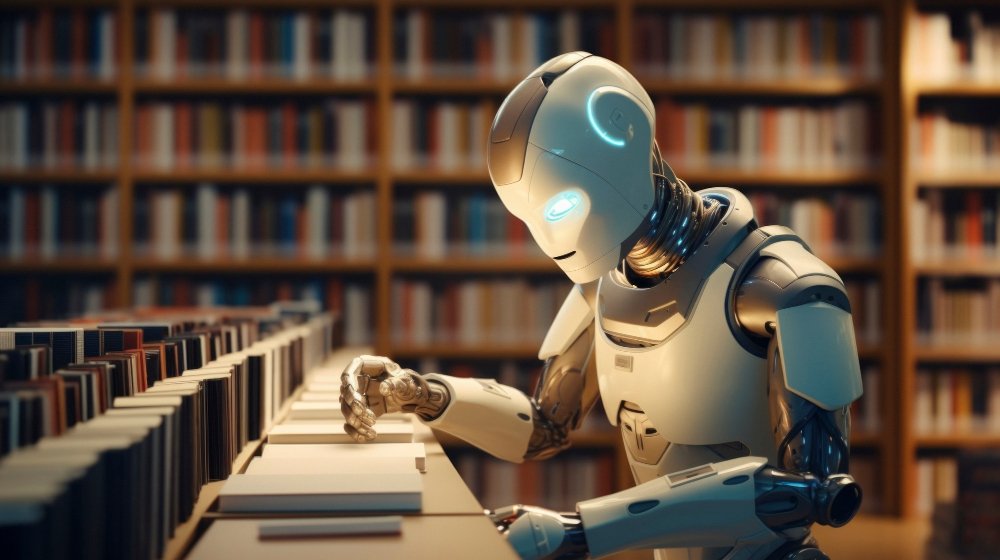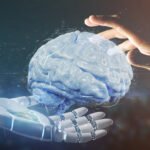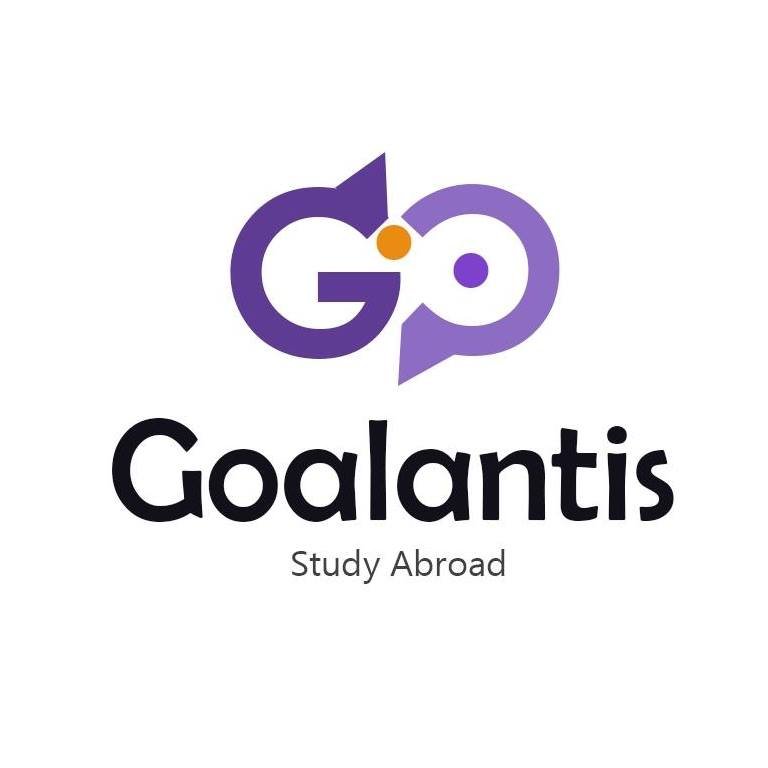In today’s fast-evolving digital world, one thing is clear: education is no longer confined to the classroom walls or traditional textbooks. As we move deeper into the 21st century, artificial intelligence in education is rapidly shifting from being a futuristic concept to a present-day necessity.
Whether it’s a chatbot answering students’ questions, a smart tool grading assignments in seconds, or an AI tutor personalizing a lesson plan in real time—AI and education are becoming inseparable. These technologies aren’t just changing how students learn, but also how teachers teach, how schools operate, and how knowledge is created and shared.
Whether you’re a student looking to study smarter, a teacher seeking innovative tools, or an education professional exploring how to modernize your institution—this guide will walk you through the most relevant AI in education examples and how to use them effectively.
Let’s dive into the future of learning.
1. Personalized Learning with AI

Have you ever felt like the explanation in class just didn’t make sense to you—or that the course content didn’t really match your level? That’s exactly where artificial intelligence in education shines, particularly in the realm of personalized learning, one of the most impactful AI applications in modern classrooms.
AI has the remarkable ability to create tailored learning experiences based on a student’s performance, engagement, and academic needs. Imagine having a digital assistant that understands your strengths and weaknesses, never gets tired, and recommends practice exercises, simplified explanations, or even a custom review plan based on your previous exams.
According to a technical report published by Anthropic, which analyzed over 574,000 educational conversations from one million university students using the Claude AI assistant:
39.3% of usage focused on generating or editing personalized educational content.
33.5% of interactions were aimed at explaining or solving specific academic problems.
🔗 Source: Anthropic Report on How Students Use Claude AI
These findings show that students aren’t just using AI to get quick answers—they’re using it to build personalized learning experiences that enhance comprehension, boost motivation, and support independent thinking.
This trend is even more pronounced among students in technical fields like computer science and engineering, who use AI tools to move beyond abstract theory into practical understanding. For them, AI bridges the gap between complex lectures and real-world application.
A few years ago, this level of customization in education may have sounded like science fiction. Today, thanks to innovations in AI and education, it’s a daily reality. Personalized learning powered by AI is now a game-changer—reshaping how we learn in both schools and universities.
2. AI Assistants and Chatbots: Your Always-On Study Partner

Imagine having a smart classmate who’s available 24/7—ready to explain difficult concepts, answer your questions, summarize lectures, and even help you refine your ideas.
That study partner exists today… and it’s powered by artificial intelligence in education.
Thanks to tools like Claude, ChatGPT, and EduChat, students can now rely on AI-powered assistants throughout their academic journey. These chatbots are no longer limited to short text responses. They engage in dynamic, context-aware conversations—understanding your learning style, reasoning through your questions, and even providing the academic sources you need, on demand.
According to the same Anthropic study mentioned earlier, four distinct types of student interactions with AI chatbots were observed:
- Direct problem-solving (e.g., asking for help with a math equation or text analysis).
- Direct content generation (e.g., writing summaries or essays).
- Collaborative problem-solving (interactive dialogue to reach an answer).
- Collaborative content creation (developing and refining ideas with the AI).
Interestingly, all four modes were used almost equally—ranging between 23% to 29%—indicating that students use AI in diverse ways: from quick solutions to deep, interactive learning.
Students in technical majors such as computer science and engineering leaned more toward collaborative interaction, with up to 37.5% of their usage involving simulated discussions, step-by-step problem solving, and code analysis.
However, there’s a cautionary side. As some students begin to rely entirely on AI assistants for completing assignments, it raises questions about ethical usage and academic integrity. When used thoughtlessly, these tools can weaken critical thinking and independent learning.
That’s why it’s essential to view AI in teaching and learning as a support system—a way to deepen understanding, not bypass it.
When used responsibly, AI assistants and chatbots are no longer futuristic novelties. They’re essential parts of the modern learning experience—tools that enhance education without replacing the student’s role in it.
3. Automating Educational and Administrative Tasks

In modern education, tedious administrative tasks and manual grading are no longer the time-consuming burdens they once were.
Thanks to the application of AI in education, many of these routine responsibilities can now be automated—allowing educators to focus more on teaching and engagement, while giving students a smoother, more structured learning experience.
Imagine this: assignments are graded instantly. You receive feedback the moment you complete a quiz. A smart platform tracks your academic progress and sends you a timely reminder when you’re falling behind in a topic.
That’s exactly what tools like Gradescope, Fetchy AI, and MagicSchool AI are designed to do—and they’re already transforming workflows in schools and universities around the world.
According to the Claude AI usage report, about 6.5% of university students used AI to assist in research design, while an impressive 74.4% of education majors relied on Claude to generate teaching content, such as lesson plans and classroom activities.
These numbers reflect the increasing role of artificial intelligence in education—not only as a content generator, but as a productivity engine. Tasks that once took hours now take minutes, freeing up time for deeper teaching and learning.
Automation isn’t limited to administrative processes. AI tools now support:
Auto-generation of class schedules based on student/teacher availability.
Real-time performance tracking with visual analytics.
Smart alerts and reminders tailored to student progress.
In this sense, the impact of AI on education goes beyond academics. It enhances the entire learning environment—making it more responsive, efficient, and adaptive to the evolving needs of both students and educators.
As educational institutions continue to embrace AI in teaching, automation will play a key role in shaping classrooms that are smarter, not just more digital.
4. Data Analysis and Smart Content Creation

In today’s data-driven world, it’s no longer enough to simply have access to information—the real value lies in analyzing it, understanding it, and using it effectively.
This is where one of the most compelling AI in education examples comes into play: the ability to process and analyze vast amounts of educational data and transform it into intelligent, personalized content.
AI-powered tools like Tableau AI and Notion AI are now capable of reading student performance data, identifying patterns, and generating real-time learning recommendations. They can even produce customized learning materials automatically, based on a student’s weaknesses, interests, or skill level.
AI is also becoming a creative partner for students, enabling them to:
Generate visual content for academic projects and presentations.
Design slide decks automatically based on a topic outline.
Draft or summarize long research reports in a clean, readable format using Natural Language Processing (NLP).
The application of AI in education here goes far beyond convenience. It helps students develop essential 21st-century skills: research, analysis, synthesis, and presentation.
These tools don’t just save time—they elevate the quality of learning, and change how students interact with information. By making academic content more engaging, personalized, and actionable, AI is helping learners better connect with knowledge in ways that align with their abilities and goals.
5. Supporting Academic Research and Critical Thinking

One of the most significant transformations brought by artificial intelligence in education is its growing impact on academic research and the development of higher-order thinking skills—especially at the university level.
In the past, writing a research paper or conducting a literature review could take days or even weeks. Today, thanks to AI tools like Elicit AI and Claude AI, students can access reliable sources, summarize them efficiently, brainstorm new ideas, and structure their findings into academically sound formats—all in a fraction of the time.
According to data from the Anthropic report, student usage of Claude AI—when measured through the lens of Bloom’s Taxonomy—was distributed as follows:
- 39.8% focused on creating content
- 30.2% involved analyzing concepts
- 10% was related to applying knowledge
This breakdown highlights that students are using AI for more than just consuming information—they’re engaging in complex cognitive tasks such as synthesis, evaluation, and content creation.
However, these benefits come with challenges. The same report raised concerns about over-reliance on AI tools. When students lean too heavily on AI to generate answers, they may miss opportunities to develop independent thinking, critical reasoning, and reflective learning.
This is where the role of students—and institutions—becomes crucial. There must be a balance between leveraging AI’s capabilities and preserving the value of self-guided exploration and critical analysis.
Ultimately, the impact of AI on education goes beyond surface-level support. When used responsibly, these tools become essential partners in the learning process—helping students ask better questions, form stronger arguments, and evolve into confident academic thinkers.
6. Translation and Simplification of Educational Concepts

One of the most common challenges students face—especially in scientific or philosophical fields—is understanding complex concepts and technical terminology.
But with the rise of artificial intelligence in education, those barriers are becoming easier to overcome.
AI tools like DeepL AI, Claude AI, and ChatGPT are now capable of:
Simplifying difficult concepts into language that matches the student’s academic level.
Translating scientific or technical content with high accuracy, without losing the intended meaning.
Summarizing long academic texts in ways that are easier to digest and retain.
One of the most compelling ai in education examples from the Claude AI usage report involved a student who used the tool to understand a dense philosophical concept. Claude broke the idea down in a clear, conversational tone—making it easier to grasp than reading a traditional textbook.
Beyond simplification, AI-powered translation is a game-changer for international students. These tools help non-native speakers understand lectures, assignments, and academic materials in their own language—without compromising nuance or context.
This ability to make knowledge universally accessible is one of the core benefits of artificial intelligence in education. It reduces language barriers, supports inclusion, and promotes educational equity in increasingly diverse learning environments.
The result?
A more inclusive educational experience, faster comprehension, and content that feels closer and more relevant to students—regardless of their linguistic or academic background.
7. Challenges and Potential Downsides of AI in Education

While the opportunities offered by artificial intelligence in education are exciting and far-reaching, they don’t come without concerns. Like any powerful tool, AI has a bright side—and a shadow. Without clear guidance and responsible use, AI could begin to compromise the quality and integrity of the educational experience.
Here are some of the most pressing challenges educators and students must navigate:
1. Academic Dishonesty
One of the most notable downsides of AI in education is its potential to be misused for shortcutting learning.
According to the Anthropic report, 47% of educational interactions with Claude AI were aimed at receiving direct answers or final summaries, without any discussion or collaborative engagement.
This reveals a concerning trend: some students are turning to AI not to learn, but to bypass the learning process entirely—raising serious concerns about academic integrity.
2. Over-Reliance on Technology
Even when the interaction appears collaborative (e.g., asking an AI to walk through a math problem), the student may still be outsourcing the cognitive work, rather than engaging deeply with the material.
This is one of the subtle challenges of AI in teaching: when it becomes a permanent crutch rather than a support, it may hinder the development of independent thinking and problem-solving skills.
3. Erosion of Critical and Creative Thinking
The Anthropic data shows that over 70% of AI use involved higher-order thinking tasks like analysis, creation, and evaluation.
While impressive, this poses a risk: if students consistently rely on AI to think for them, they may gradually lose the ability to generate original ideas or construct logical arguments on their own. AI may produce content that sounds smart—but it isn’t your thinking.
4. Lack of Ethical Guidelines and Responsible Use
Many schools and universities still lack clear policies on how to regulate the use of AI in education.
This leaves room for misuse, inequality in academic performance, and a lack of transparency regarding acceptable and unacceptable uses of AI tools.
The solution? Transparency and balance.
To fully benefit from AI’s potential, educators and institutions must openly acknowledge these risks and work proactively to:
Develop ethical frameworks for ai in education.
Educate students on responsible AI use.
Design assessments that reward original thought over AI-generated responses.
Only then can AI remain a learning tool, not a shortcut—and support the mission of education, rather than undermine it.
8. Books and Courses on Artificial Intelligence in Education

If you’re a student, teacher, or education professional seeking a deeper understanding of how to integrate artificial intelligence in education, there are a number of outstanding books and online courses that serve as excellent entry points. These resources go beyond the technical—they also explore the pedagogical, ethical, and even philosophical dimensions of AI in the learning environment.
Recommended Books on AI and Education
These books are highly regarded in the field and offer practical, research-based insights into the application of AI in education:
Artificial Intelligence in Education: Promises and Implications for Teaching and Learning
By Charles Fadel, Wayne Holmes, and Maya Bialik
This book explores how AI is reshaping teaching methods and the learner experience, focusing on curriculum design, individualized learning, and assessment.
Download the bookAI and Education: The Importance of Teacher and Student Agency
By Rose Luckin
This work emphasizes the intersection of AI and human intelligence, highlighting the continued need for teacher judgment and critical thinking in the age of AI.
Download the bookMachine Learning for Education: Personalized Learning and Data-Driven Decision Making
By Ryan Baker & George Siemens
This book delves into how data science and machine learning are transforming instructional design and student assessment.
Download the book
Top Online Courses for Educators and Learners
Whether you’re exploring AI in teaching or learning how AI can support students, these online courses provide hands-on knowledge and practical tools:
AI For Everyone
By Andrew Ng – Coursera
A popular beginner course explaining the fundamentals of AI and how it applies across fields, including education.Teaching with AI
By Microsoft Learn
A free learning path to help teachers use Microsoft’s AI tools to enhance lesson delivery, student feedback, and classroom interaction.The Ethics of AI in Education
By UNESCO – edX
A course focused on policy-making, ethics, and responsible AI deployment in education systems around the world.Global Education for Teachers
This course provides an overview of global education concepts and practices, helping teachers incorporate global perspectives into their teaching.FutureLearnEducating for Sustainable Development (ESD) in Schools and Universities
This course explores key issues related to sustainability and how to deliver this knowledge in educational settings.
These resources provide both the theory and practice needed to understand and apply AI in education—whether you’re looking to modernize your classroom, improve student learning outcomes, or stay ahead in your teaching career.
9. Key Recommendations for Educational Institutions
Despite the many benefits, tools, and challenges we’ve discussed throughout this article, the true success of artificial intelligence in education ultimately depends on how ready educational institutions are to adopt it—ethically, strategically, and effectively.
In a world of accelerating technology, digital confusion can be just as dangerous as digital ignorance. That’s why schools and universities must go beyond the hype and develop clear, informed frameworks for implementation.
Here are five key recommendations for academic institutions seeking to integrate AI in a meaningful and responsible way:
1. Establish Clear AI Policies
Institutions should define formal policies on the application of AI in education, especially in areas such as exams, research, plagiarism, and student assessments.
Clear boundaries between acceptable and unethical use will help maintain academic integrity while embracing innovation.
2. Train Educators and Staff
Providing tools is not enough. Teachers and administrators need training on how to use AI tools effectively.
Workshops, courses, and professional development programs should focus on practical applications, ethical considerations, and strategies to integrate AI in teaching and curriculum planning.
3. Encourage Ethical Use Among Students
Students must be taught to treat AI as a tool to enhance their learning—not as a shortcut that replaces critical thinking.
Institutions should foster a culture of responsible AI usage, where self-guided learning is supported, not undermined, by intelligent systems.
4. Integrate AI into the Curriculum
AI should not be limited to administrative functions or grading support. It must be embedded in the curriculum itself:
Through interactive learning with AI-powered tutors
Generative tools for projects and assignments
Data-driven feedback systems that personalize instruction
This approach prepares students to work alongside AI, not just be recipients of it.
5. Promote Research in AI and Education
Institutions should actively support master’s theses, doctoral research, and faculty projects that explore the intersection of ai and education.
By encouraging evidence-based innovation, universities can lead the development of smarter, more inclusive educational models tailored to their own contexts.
Conclusion
In a world evolving faster than ever, the real question is no longer “Will artificial intelligence impact education?”
It’s “How can we harness artificial intelligence in education in a smart, fair, and ethical way?”
Throughout this comprehensive guide, we’ve explored the most relevant AI in education examples—from personalized learning and data analysis to AI-powered assistants and smart content creation.
We’ve also addressed the very real challenges and potential risks that call for thoughtful, informed use of these tools.
But perhaps the most important takeaway is this:
Artificial intelligence is not a replacement for students or teachers—it’s a powerful partner that can enrich the learning journey.
If you’re a student, now is the time to build new skills and experiment with tools that help you learn smarter, not harder.
If you’re an educator or school leader, now is the time to create a clear strategy for adopting AI in a way that complements—not replaces—human teaching.
FAQ
1. What is artificial intelligence in education?
Artificial intelligence in education refers to the use of AI technologies—such as machine learning, natural language processing (NLP), and predictive analytics—to improve learning, teaching, and administrative processes. AI can personalize instruction, automate grading, support research, and assist both students and educators.
2. How is AI used in the classroom?
AI is used in classrooms to:
Personalize learning paths based on student performance
Provide instant feedback and grading
Assist teachers with lesson planning
Enable AI chatbots and virtual tutors to answer student questions
Generate content like quizzes, summaries, and flashcards
3. What are the benefits of AI in education?
Key benefits include:
Improved personalization for students
Time-saving automation for teachers
Enhanced data-driven decision-making
Support for students with diverse learning needs
Increased access to resources through translation and NLP tools
4. What are some real-world examples of AI in education?
Some widely used AI in education examples include:
ChatGPT and Claude AI for tutoring and writing support
Gradescope for automated grading
Khanmigo from Khan Academy for interactive learning
Elicit AI for academic research assistance
Quizlet AI for smart flashcard generation
5. What are the risks or challenges of using AI in education?
Common concerns include:
Academic dishonesty from over-reliance on AI tools
Loss of critical thinking or creativity
Bias in AI algorithms
Lack of clear ethical or institutional policies
Privacy and data security risks for students
6. Can AI replace teachers?
No. AI is a support tool, not a replacement. While AI can automate repetitive tasks and enhance instruction, human teachers provide emotional intelligence, mentorship, and context-sensitive decision-making that AI cannot replicate.
7. What is the role of NLP in AI education tools?
Natural Language Processing (NLP) enables AI tools to:
Understand student input in natural language
Simplify complex texts
Generate readable content summaries
Enable conversational chatbots and intelligent tutoring systems
8. Are there any good courses to learn about AI in education?
Yes! Some top-rated options include:








